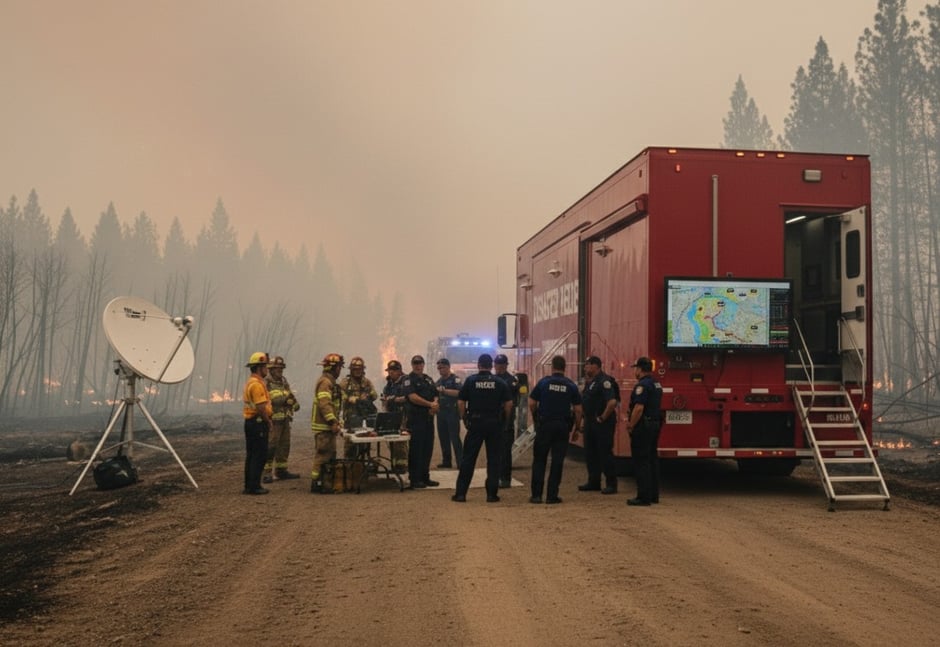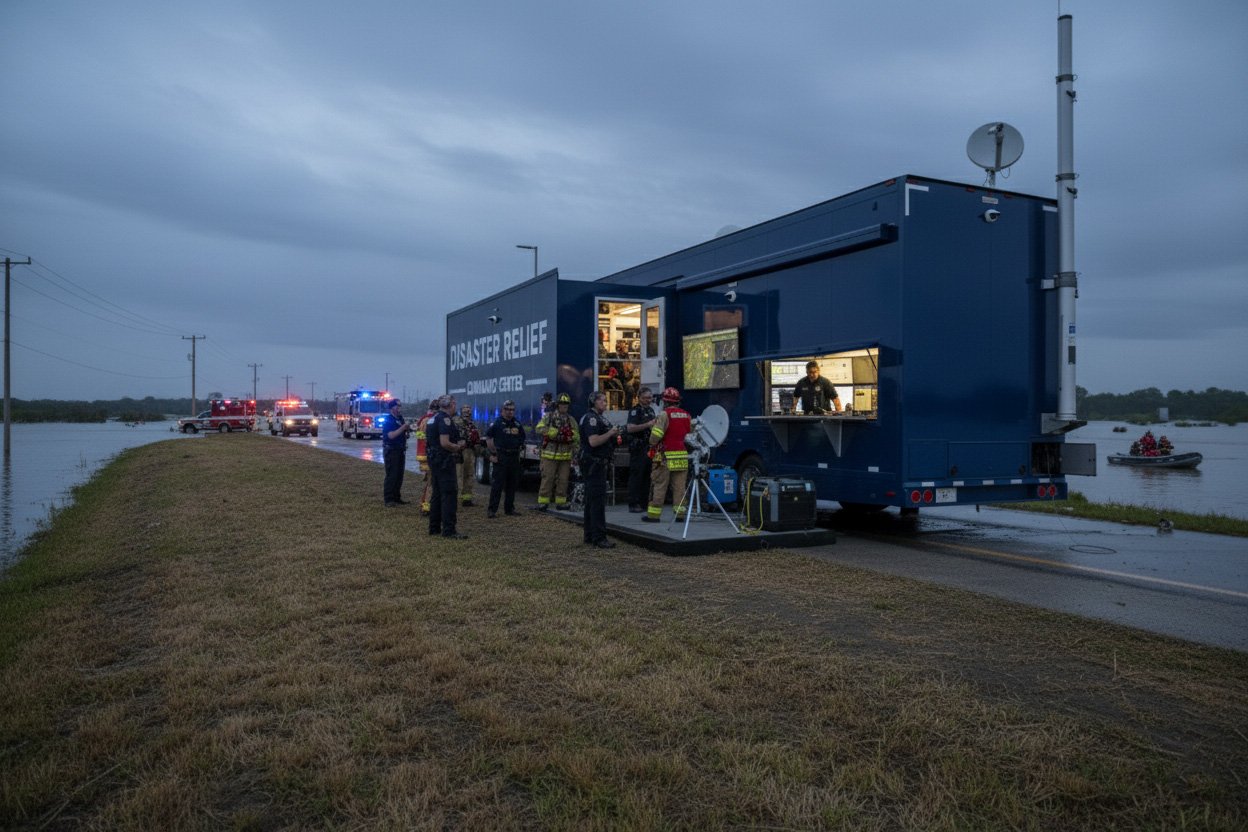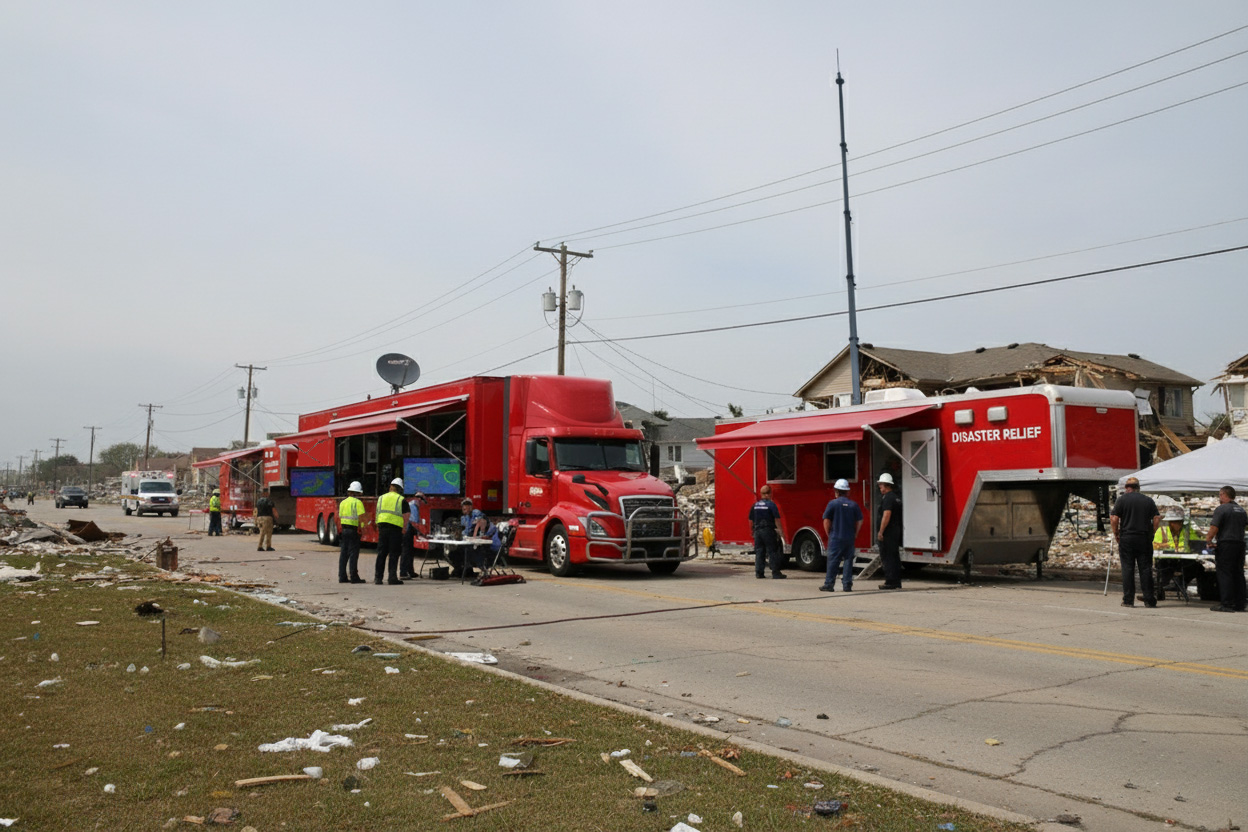How Mobile Command Centers Improve Coordination During Natural Disasters
When natural disasters strike, chaos and disruption follow. Traditional communication networks collapse, mobility becomes restricted, and...
6 min read
Craftsmen Industries Nov 6, 2025 1:05:40 AM

Wildfires are among the most devastating natural disasters, causing widespread destruction and loss of life. Effective management of these fires requires coordinated efforts from various agencies, real-time situational awareness, and rapid decision-making. Mobile Command Centers (MCCs) have emerged as pivotal assets in this regard. These self-contained units are equipped with advanced communication systems, data analytics tools, and operational facilities, enabling incident commanders to manage wildfire responses efficiently, even in remote or infrastructure-deprived areas.
In 2023, about 2.7 million acres burned across the United States, well below the 10-year average of 7.5 million acres. This shows why preparedness is crucial and highlights the role of MCCs in supporting faster, more effective wildfire response.
This blog explores the significance of MCCs in wildfire management, exploring their functionalities, technological integrations, and the benefits they bring to emergency response operations.
Mobile Command Centers (MCCs) are specialized disaster response vehicles designed to serve as mobile hubs for incident management during emergencies, including wildfires. These units are equipped with state-of-the-art communication systems, data analysis tools, and operational facilities, allowing incident commanders to coordinate response efforts effectively, even in challenging environments.
Before discussing the specifics, it’s important to understand that MCCs are designed to function as fully independent command ecosystems capable of operating without external power or network dependency.
MCCs are essential in wildfire management as they provide a centralized platform for communication, data analysis, and coordination, enabling efficient and effective response efforts, especially in areas lacking infrastructure.
One of the primary advantages of MCCs is their ability to enhance situational awareness during wildfire incidents. By integrating various technologies, these centers provide real-time information that is crucial for making informed decisions.

Modern MCCs bring together powerful systems that deliver a complete operational picture:
The integration of these technologies transforms MCCs into data-driven command hubs that strengthen every aspect of wildfire response:
By turning complex data into actionable intelligence, MCCs empower emergency teams to stay one step ahead of fast-moving wildfires.
Wildfire management often involves multiple agencies working together. MCCs play a pivotal role in facilitating this collaboration by providing a unified platform for communication and coordination.

The National Interagency Coordination Center (NICC) processed over 520,000 resource requests nationally in 2024, representing an increase of more than 180,000 requests compared to 2023. This surge reflects enhanced mobilization capacity enabled by improved interoperability, communication, and unified command efforts across fire agencies.
MCCs break communication barriers by integrating multi-agency systems into one cohesive network:
A coordinated approach through MCCs amplifies response efficiency and unity of action:
By transforming fragmented response systems into one unified command network, MCCs ensure that every agency moves in sync, from initial containment to full recovery.
Efficient logistics and resource management are critical components of wildfire response. MCCs assist in these areas by providing facilities and systems to track and manage resources effectively.
Mobile Command Centers use advanced tracking and logistics systems to monitor and deploy resources efficiently during wildfire operations.
MCC logistics enhance wildfire response through faster mobilization, transparent tracking, and cost-efficient resource management.
According to the National Interagency Fire Center, coordinated logistics and resource management, supported by integrated command and communication systems, significantly enhance wildfire response efficiency by improving resource mobilization and communication among agencies.
The integration of advanced technologies into MCCs has revolutionized wildfire management, providing tools that enhance response capabilities and efficiency.
These innovations bring precision and foresight into wildfire operations, enabling proactive and data-driven response.
The integration of AI, ML, and 5G within Mobile Command Centers has transformed wildfire response into a faster, smarter, and more adaptive operation.
A U.S. Government Accountability Office (GAO) report found that the use of ML in wildfire model estimates has improved accuracy by 38% across several regions, particularly in risk forecasting and resource allocation.
By embedding these technologies, MCCs enhance speed, clarity, and resilience in wildfire fighting efforts, ensuring incident commanders maintain situational control and respond before situations worsen.
With enhanced technological integrations established, the next focus becomes optimizing resource coordination and multi-agency collaboration, making response both smart and unified.
Mobile Command Centers have become indispensable in modern wildfire management. By providing enhanced situational awareness, facilitating multi-agency collaboration, supporting logistics, and integrating advanced technologies, MCCs enable more effective and efficient response to wildfire incidents. As wildfires continue to pose significant threats, the evolution of MCCs will play a crucial role in safeguarding communities and natural resources.
For organizations seeking to enhance their emergency response capabilities, investing in advanced Mobile Command Centers is a strategic move towards ensuring preparedness and resilience in the face of wildfires.
Mobile Command Centers (MCCs) act as on-site headquarters, integrating communication, mapping, and coordination systems to manage fire suppression, evacuation, and logistics efficiently, even in remote or infrastructure-damaged regions.
Equipped with GIS, drones, and real-time analytics, MCCs provide incident commanders with accurate situational data, helping them predict fire behavior, allocate resources effectively, and make faster, evidence-based decisions.
MCCs maintain operational control through satellite connectivity, LTE systems, and self-sufficient power sources, ensuring uninterrupted communication and coordination in areas where networks and infrastructure are down.
They unify fire departments, law enforcement, and medical teams through shared digital platforms, secure data channels, and real-time video conferencing, eliminating communication gaps and promoting synchronized operations.
Beyond immediate response, MCCs collect critical operational data for post-incident analysis, helping agencies refine strategies, improve preparedness, and build more resilient wildfire management systems for the future.

When natural disasters strike, chaos and disruption follow. Traditional communication networks collapse, mobility becomes restricted, and...

In today’s rapidly evolving threat environment, where natural disasters strike, urban incidents escalate, and critical infrastructure faces growing...

MCCs have a variety of use cases that help different agencies in many ways. They are vehicles that primarily help with managing and coordinating...